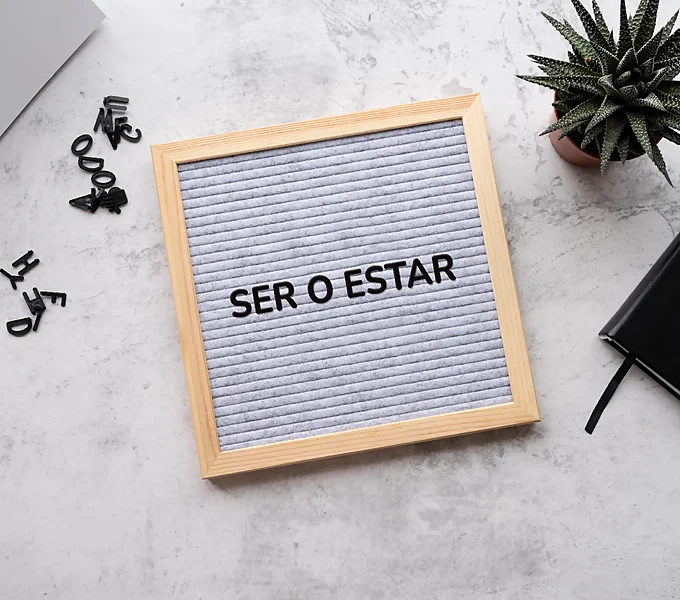The verb to be in Spanish can be used as “ser” or “estar” and each of them can have different connotations in Spanish, so you have to learn to differentiate their meaning depending on when they are used.
In this note we will give you a brief introduction on the use of these verbs.
The verb to be in Spanish, a brief introduction
One verb that usually confuses Spanish students the most is the verb to be, because in Spanish two verbs are used: Ser and estar.
Generally speaking, we can say that Ser is used to talk about the essential or permanent characteristics of a person, while Estar is used to talk about circumstances.
The verb Ser
The verb Ser implies somewhat more permanent situations or conditions inherent to the person or situation.
The verb Ser is used in Spanish in the following situations:
Physical appearance or personality traits.
Example:
Camila es feliz.
Carola es bonita.
Marco es simpático.
Identity or identifying features.
Example:
El perro es blanco.
Yo soy peruana.
Origin.
Example:
María es mexicana.
Ese auto es japonés).
Family or personal relationships.
Example:
Ellos son hermanos.
Carla y Johana son muy buenas amigas
Possession.
Example:
Ese teléfono es mío.
When or where an event takes place.
Example:
El juego es el viernes.
Hoy se celebra su cumpleaños.
Date, seasons and time.
Example:
Hoy es lunes.
Hoy es 8 de abril.
Es Navidad.
¿Qué hora es? Son las once.
The time of day.
Example:
Aquí es de noche.
Aún es de día.
Passive sentences: ser + participle.
Example:
Nosotros estamos yendo para allá.
Ella estaba haciendo su tarea.
With the preposition para: addressee, objective or purpose.
Example:
Ese regalo es para ti.
La máquina es solo para hacer jugos.
Indicate price.
Example:
-¿Cuánto es?
-Son 20 pesos.
The material, origin or belonging of an object + preposition of.
Example:
El pantalón está hecho en Perú.
La camisa es de María.
Indicate occupation or profession.
Example:
Juana es programadora.
Ramón es cocinero.
The verb Estar
As for the verb estar, it is used in more specific moments and indicates temporary states, expressing possession or belonging and situations that are in constant change. For this reason, it is also used as an auxiliary verb in different situations.
The verb Estar is used in Spanish in the following situations:
Moods, mental or health status.
Example:
He estado enfermo desde ayer.
Estoy muy feliz.
Marital status.
Estoy soltera.
Ellos están casados.
but: Él es viudo.
Location.
Example:
La plaza está allá.
Ella está lejos.
The date or the season of the year, (not the time): 1st person plural + prepositions a/en.
Example:
Estamos en casa.
Estamos en verano.
Modal adverbs.
Example:
Estoy de vacaciones.
Circumstances / situations: preposition de + noun;
Example:
Marco siempre está de buen humor.
Clara y Marina están ocupadas este fin de semana.
The price with the preposition a.
Example:
-¿A cuánto están las manzanas?
-A 10 pesos el kilo.
Type of manufacture: estar + participle.
Example:
El armario está hecho de madera
El anillo está bañado en oro.
Verb tense: estar + gerund.
Example:
Estamos bailando en una fiesta.
Estamos mirando el partido.
Keep in mind that Spanish has many varieties and that the conjugations or forms of usage may vary depending on where the language is spoken.


